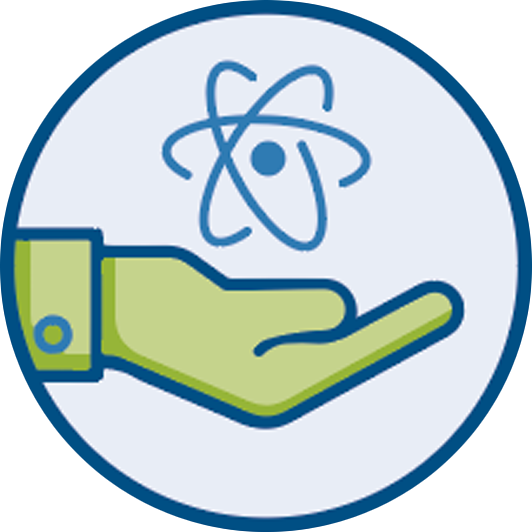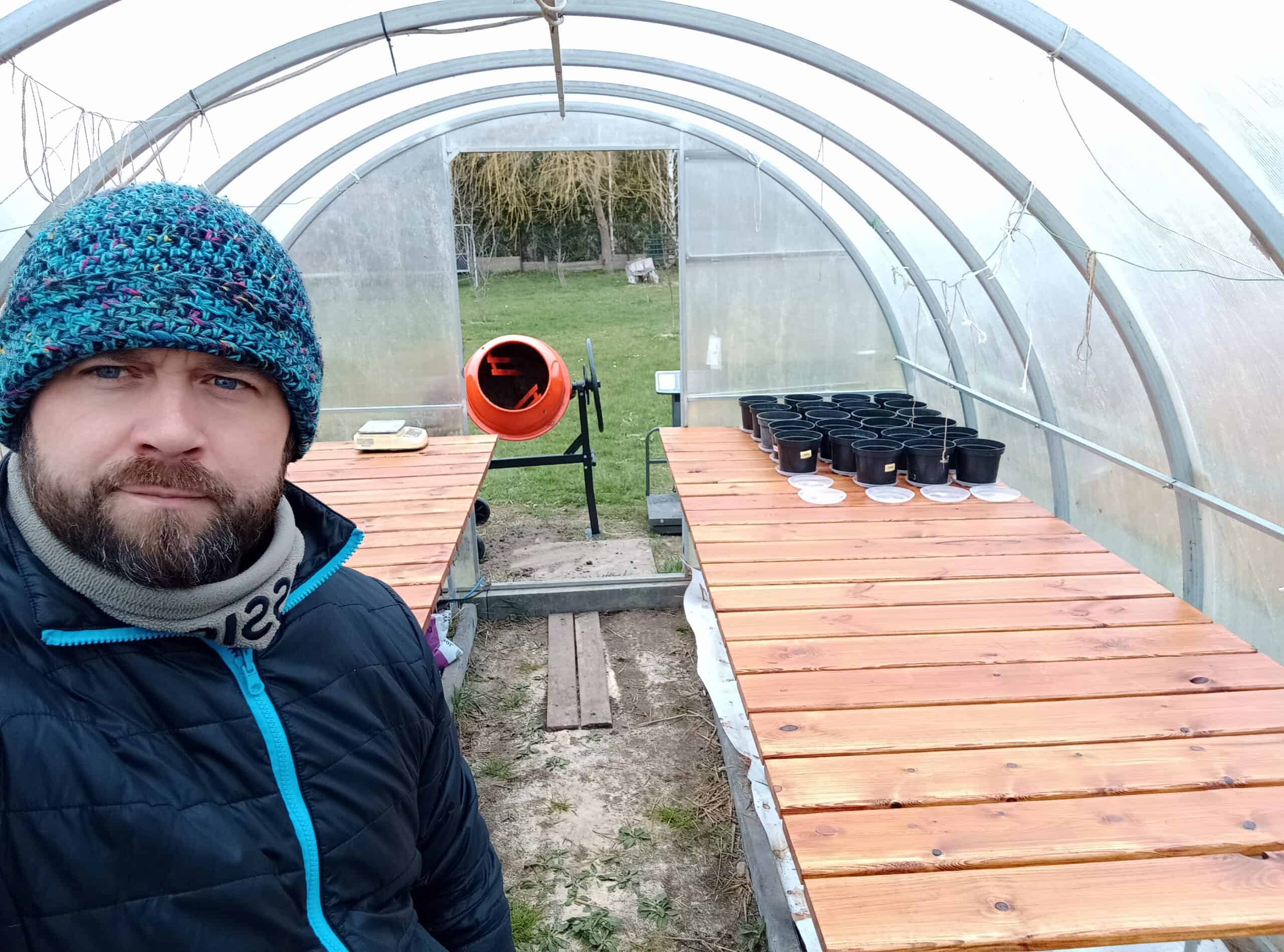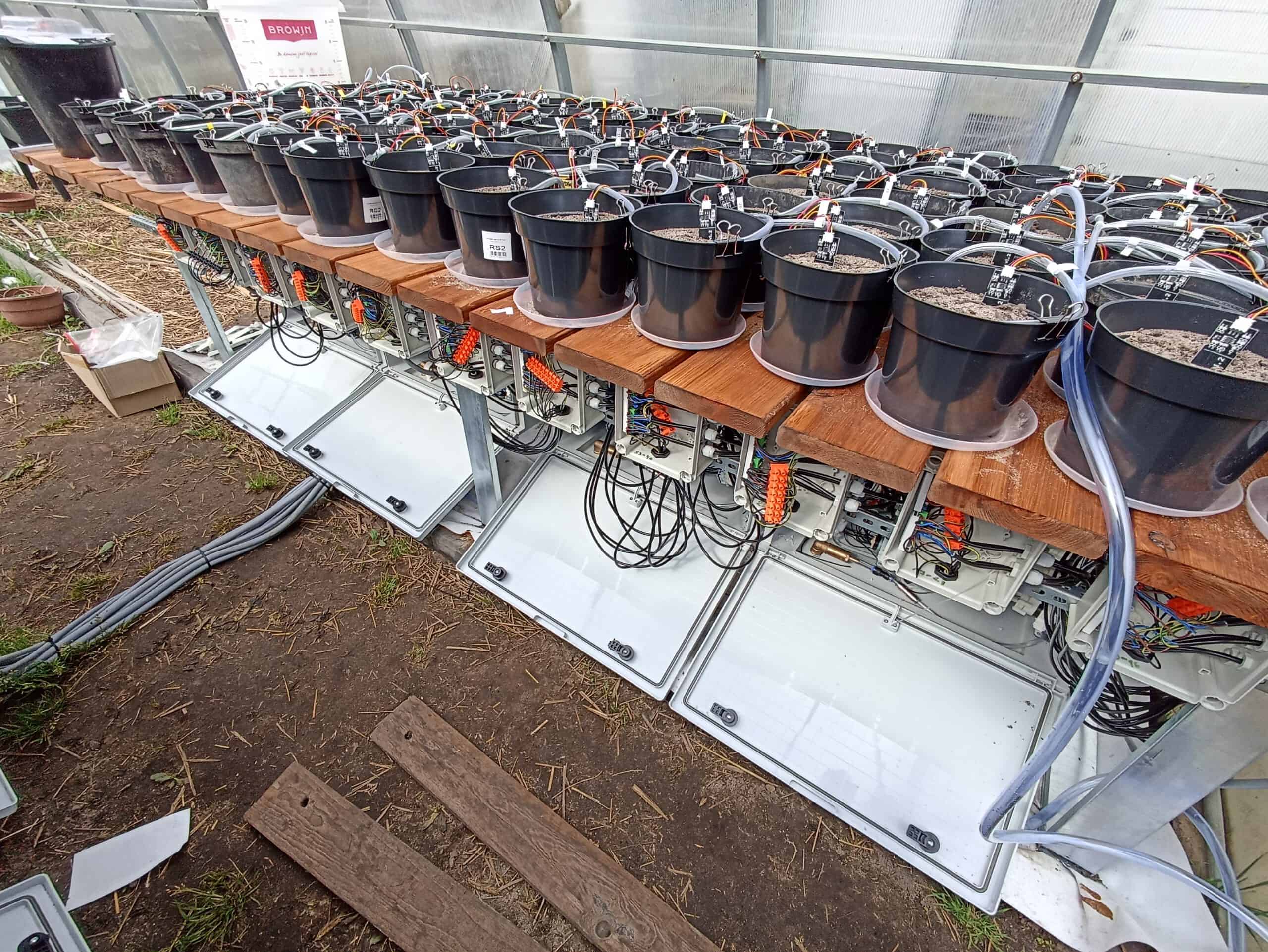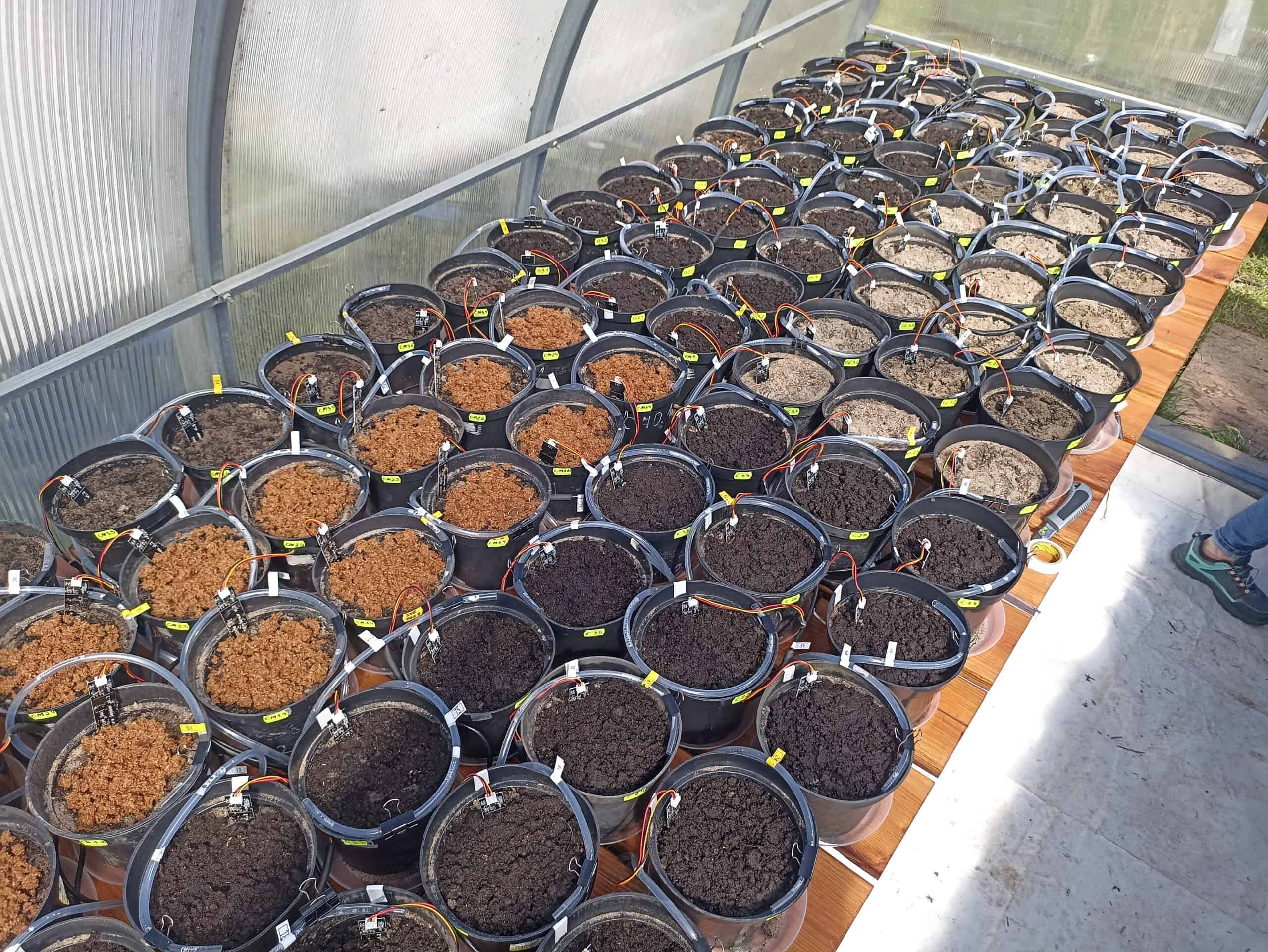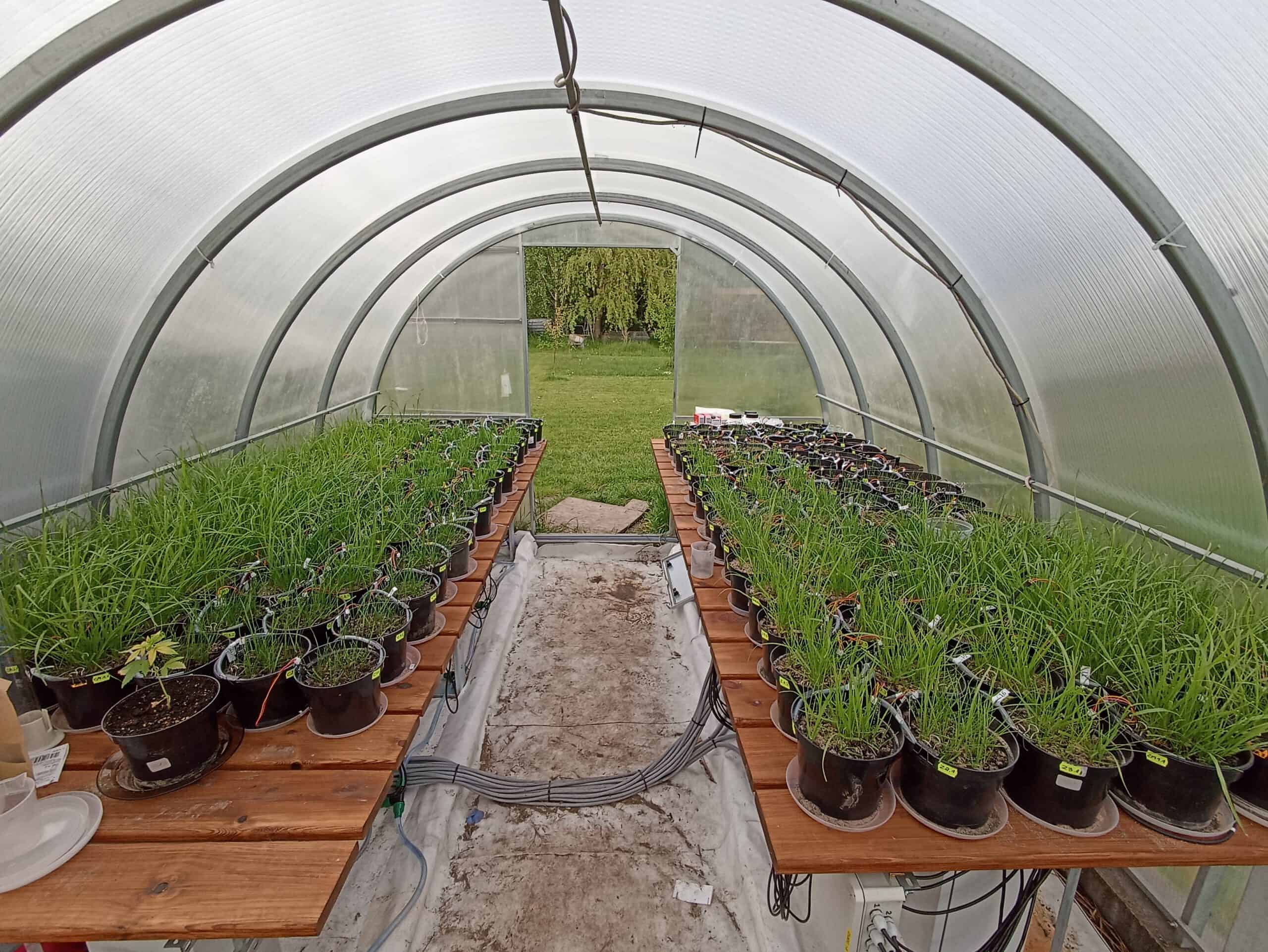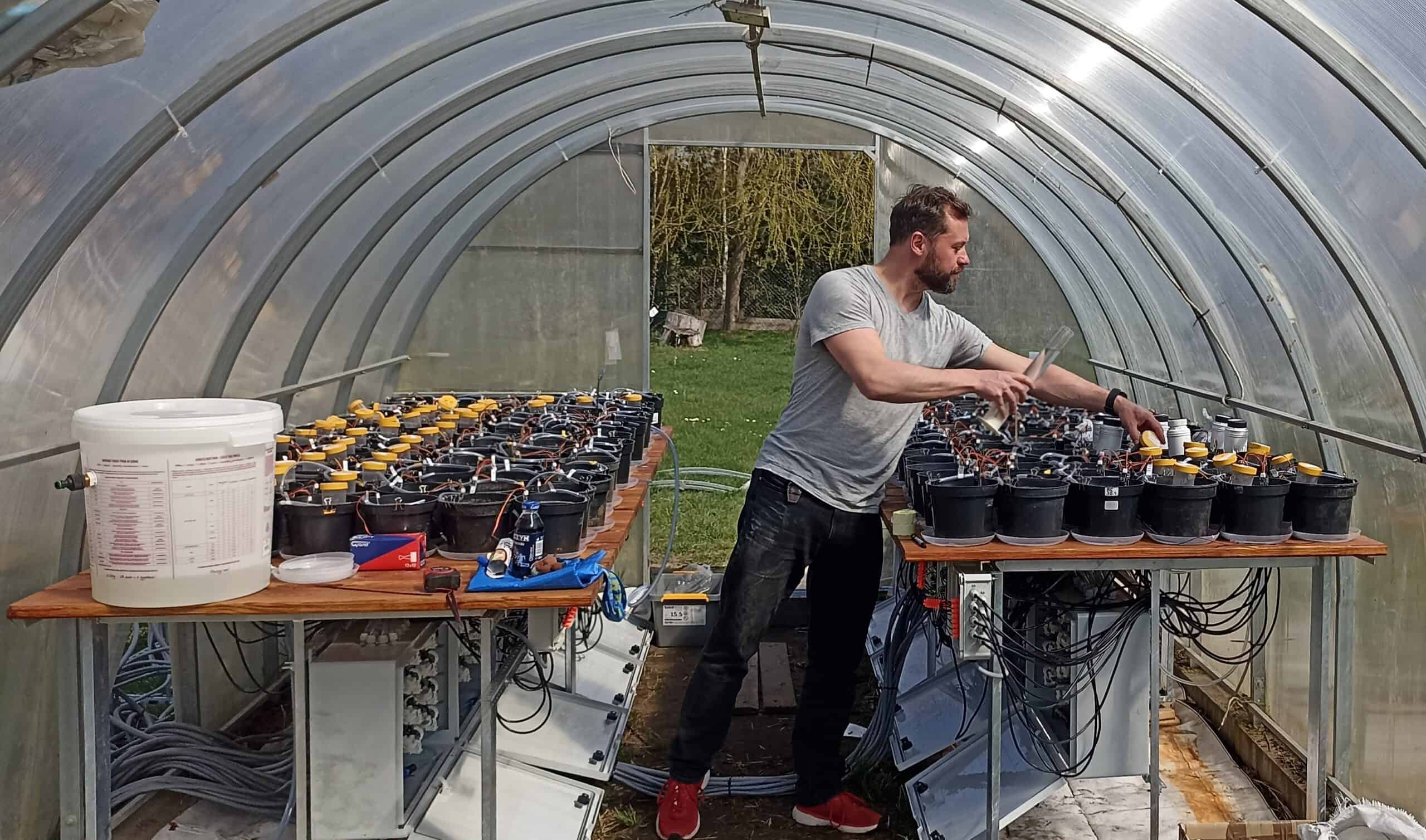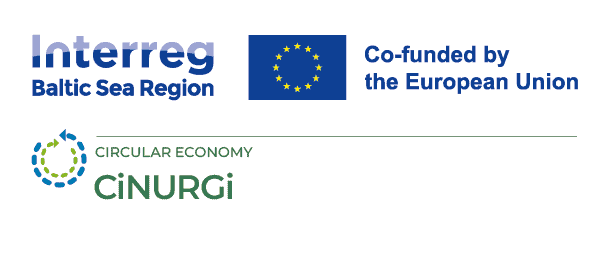
Greenhouse trials of recycled nutrient fertilizers in progress
27 June 2025
In CiNURGi a big part of our solution to nutrient recycling has been to develop and test recycled nutrient fertilizers. This summer CiNURGi is carrying out greenhouse trials of recycled nutrient fertilizers, using ryegrass planted in pots, which will be monitored and harvested from May to September 2025. CiNURGi has chosen to conduct tests in pots in greenhouses because the recycled nutrient fertilizers cannot be applied to production fields due to slightly elevated cadmium content. The pellets showed 6.6 ppm of cadmium which is over the limit of 5 ppm set in Polish and EU regulations. The elevated cadmium contents are probably due to the biomass ash used in the mix, because the ash was formed during the combustion of biomass harvested from cadmium-rich soils in the highly fertile lowlands from around the Vistula estuary in Northern Poland.
CiNURGi project partner Rendben, a Polish prototypes and non-serial machinery building company, led by Adrian Woźniak, in consultations with IMP PAN, has optimised and produced 2 different fertilizer pellets for the greenhouse trials. The fertilizer pellets are composed of fish food processing waste, digested sewage sludge, biomass ash and either of wood and oilcake biochar or bovine shavings from a car upholstery plant. The particular ingredients for the mix were carefully identified taking into account the commercial abundancy of waste, its distance to the project partner facilities., the pelleting ability based on their moisture and mechanical properties and finally nutrient contents. The pellets contain nitrogen, phosphorus pentoxide and potassium oxide, which are common nutrients in fertilizers. The first mix contains 0.62% nitrogen, 3.30% phosphorus pentoxide and 8.68% potassium oxide. The second mix contains 4.93% nitrogen, 3.76% phosphorus pentoxide and 11.09% potassium oxide. The difference in nitrogen content between the two mixes, is due to the ingredients. Bovine shavings have a higher content of nitrogen compared to the biochar in the other mix.
The experiment will use several different combinations of fertilizers. The fertilizer pellets will be used as a base in six of the experiments. The first two experiments in the test use solely the pellets from either the mix with wood and oilcake biochar or the one using bovine shavings (experiment 1&2). Researchers at the Institute of Fluid-Flow Machinery Polish Academy of Sciences are administering each fertilizer dose into three pots, having 7 increasing application loads, filling the greenhouse with 21 pots in total per each treatment.
The following experiments (3&4) will add effective microbes in a form of slightly acidic silage from bakery waste and diary waste mix to each pellet, firstly mobilizing the nutrients lowering pH of alkaline pellets and secondly improving the microbial health of the soil by adding lactic acid bacteria which should further influence the nutrients mobility from pellets. The last two experiments (5&6) using the pellets will include seafood waste (shrimps shells) containing chitosan which should hopefully increase the organic matter of the soil and, most importantly, thanks to the chitosan, help reducing plant stress while growing on waste-based products. These six experiments will be compared to an experiment using only cow manure granulated as an organic reference fertilizer (experiment 7) and a control group with no treatment.
These experiments are important to gage the efficiency of recycled nutrient fertilizers. As recycled nutrient fertilizers are less homogenous than mineral fertilizers CiNURGi wants to have data to create evaluation standards for quality control and agronomic value of recycled nutrient fertilizers. By developing recycled nutrient fertilizers CiNURGi can have data to develop and promote standards for safe and sustainable recycling of nutrients.
Work package leader Ksawery Kuligowski at The Institute of Fluid-Flow Machinery, Polish Academy of Sciences and Adrian Woźniak – president of the RENDBEN LtD. summarize:
“It is important to be able to demonstrate that nutrient recycling works, and that we can process materials like sewage sludge, digestate, ash, other food and fish processing waste and biochar into fertilizers. Based on the tests we’re performing now, we can optimize the final composition and demonstrate at a small scale that this approach works. This is important because small and medium-scale waste-water treatment plants or biogas plants face economic challenges with nutrient recycling. Thanks to these experiments, we hope to offer solutions both for managing large volumes of sludge and digestate and recovering nutrients effectively to waste-water treatment plants.”



